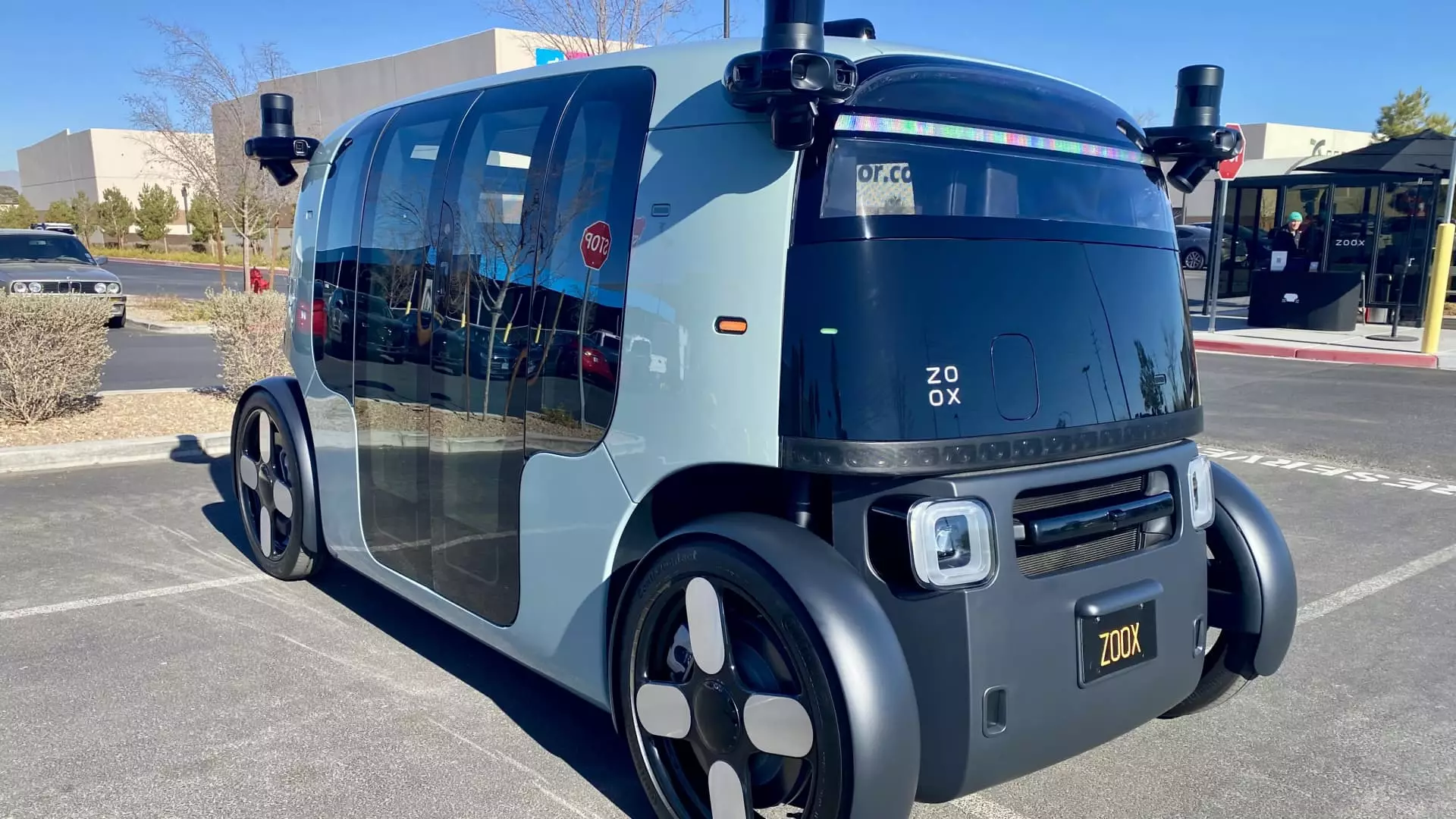In 2023, Zoox, Amazon’s autonomous vehicle initiative, finds itself at a pivotal crossroads. Once regarded as a promising contender in the autonomous ride-hailing space, Zoox is now focusing on scaling its operations and preparing to take its robotaxi service to the public. As co-founder and Chief Technology Officer Jesse Levinson outlines, the company’s intent is to swiftly ramp up its fleet and commence public rides in Las Vegas, its primary market. With the backing of Amazon’s resources, Zoox aims to reshape urban mobility, despite the challenges faced by the broader industry.
The journey Zoox is on is not an easy one. Recent evaluations of the autonomous vehicle sector bear witness to a cooling investor sentiment, particularly as legacies like General Motors and Ford retract their own ambitious self-driving projects. Yet, Zoox refuses to retract its forward-looking vision. Launched a decade ago and acquired by Amazon in a $1.3 billion deal, Zoox remains steadfast in its goal of becoming a leader in autonomous transportation solutions.
What differentiates Zoox is not merely its ambition but also its innovative design philosophy. Unlike its competitors, such as Waymo, which retrofits existing cars to achieve autonomy, Zoox has engineered a unique basis for its robotaxi service. This bespoke approach means that the vehicle is devoid of traditional driving elements such as steering wheels and pedals, fostering a new paradigm in urban transport. With an atypical design that features rear-hinged doors and seating arrangements that facilitate conversation among passengers, Zoox plans to offer a fresh experience in the world of robotaxis.
Despite being characterized by some as resembling “boxes” or “toasters,” the design is a deliberate choice aimed at maximizing passenger comfort and accessibility. While Sam Abuelsamid, an expert in autonomous vehicle technology, has pointed out the thoughtful aspects of Zoox’s design, the path forward remains fraught with uncertainty. As the company refines the functionalities of its offerings, it must also address public perceptions and concerns regarding safety and usability.
Even as Zoox edges closer to its ambitions, the reality of bringing autonomous vehicles to the mass market is riddled with complications. Driving in urban environments is inherently complex, and Zoox’s autonomous vehicles, despite having undergone rigorous testing, are not immune to the scrutiny that comes with public experimentation. During recent evaluations, the vehicles have displayed commendable maneuverability on the Las Vegas Strip; however, instances of hesitation or suboptimal decision-making linger, igniting debates about the reliability of such technology.
The narrative of autonomous vehicles has been peppered with instances of failures, leading to stringent regulatory environments and public skepticism. The spectacular crash of GM’s Cruise autonomous fleet, along with its subsequent grounding, serves as a stark reminder of the obstacles faced by self-driving technologies. Regulatory hurdles, liability issues, and a patchwork of technological standards complicate the path to a sustainable and profitable robotaxi model.
As Zoox gears up for what it hopes will be a successful public rollout, the larger context of the autonomous vehicle industry cannot be overlooked. While it is ground-checking its plans in Las Vegas and intends to expand to other major cities like San Francisco and Miami, the company is keenly aware that the marketplace is less predictable than anticipated. Associates in the industry are also evaluating their operating models, seeking viable pathways toward profitability amidst significant operational costs.
If Zoox can successfully implement its Early Rider Program in Las Vegas, it could provide a foundation for broader acceptance of autonomous transportation. Moreover, if Levinson’s promise of establishing a significant presence in key U.S. cities materializes by the decade’s end, it could change how urban transportation is perceived and experienced. Nevertheless, Zoox must navigate myriad challenges that extend beyond the mere functionality of its vehicles.
In the world of autonomous driving, the path from technological potential to practical application is more intricate than many have assumed. As Zoox pushes forward, it stands not only at the forefront of a technological revolution but also amid an industry grappling with its own ambitions and limitations. The coming year will thus be critical not only for Zoox’s success but for the autonomous industry’s evolution as a whole. Whether Amazon’s investment pays off remains to be seen, but for now, the stakes are higher than ever for both Zoox and the future of automated urban mobility.

